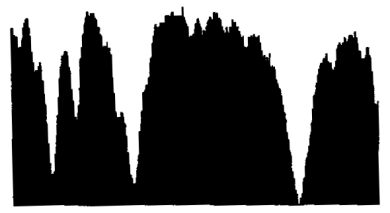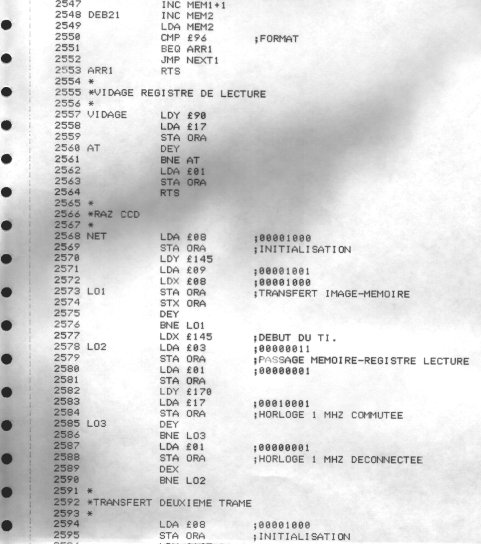PART 2: 1982-1985
In October 1982, I sent to the all-new Programs Committee of the 24” Telescope at Pic du Midi Observatory a letter which would be heavy with consequence. I requested observing time on a telescope which was already legendary. My proposal concerned photoelectric photometry, my thesis that the matrix technique of CCD imaging was no longer good enough! My proposal was approved, and I used the 24” telescope for the first time in July 1983 with members of the Alpha Centauri club. I instantly fell in love with this little corner of the Pyrénées mountain. The same year, I moved to the Pic du Midi, but this time on the 40”, on the SONATE program team which measures atmospheric turbulence under the leadership of Gerard Coupinot, astronomer at the Midi-Pyrénées Observatory. It was then that I learned how to operate that prestigious telescope.

At the end of 1983, I had a telephone conversation with Pierre Lacques, who is responsible for the 40” telescope at the Pic du Midi, in which I asked if it would not be possible to use it to make some CCD images. After a brief astonished silence on Pierre’s part (CCD technology was still in its infancy, even among professionals), his response came, and it was ‘yes’! That ‘yes’ has completely turned my life as an amateur astronomer around (and perhaps even my whole life!). That summer, the Apple IIe was installed in the dome of the 40”, and the little detector chip at the focus of its 49-foot focal length, to take the very first CCD images with this telescope (by the drift-scan method). In that month of June 1984, with Richard Szczepaniak, we invented CCD planetary imaging and independently discovered the technique of unsharp masking (not entirely, as this image of Jupiter shows – but its potential was considerable, as we shall demonstrate).

A rare picture. Still in 1984, at the time of the second observing run on the Pic du Midi 40” telescope (clearly the telescope was under-utilized at that time!), a prism spectrograph and a CCD chip were put together with a wooden brace and adhesive tape. Real professionalism! If you look closely, you can see a calibration lamp at the level of the entrance aperture which produces a neon spectrum. The CCD chip was cooled by a Peltier module; that was a first. To avoid icing the detector, a thick block of glass is mounted at the entrance aperture (you can see it in the picture). Rudimentary, but it worked. Since the dawn of the CCD, the idea of doing a little science was always just beneath the surface. For that reason, this is one of my favorite pictures.

Inside the gondola of the aerial tramway ascending Pic du Midi: on the left, Pierre Lacques; on the right, François Colas.


In the summer of 1984, during an astronomy camp of ANSTJ (Association Nationale Sciences Techniques Jeunesses), Olivier Saint Pé and Laurent Colot constructed an extraordinary spectrograph of very great size (!) which occupied one part of the terrace of the Toulouse Superior School of Aeronautics. I took the opportunity to place a Thomson TH7801 CCD chip at the focus of this spectrograph, to observe the Sun. You see here a very small part of the solar spectrum, centered on the triple lines of magnesium (at 5167.3Å, 5172.7Å, and 5183.6Å). The resolution we attained was excellent – 0.4Å. Obviously, during that era, the astronomical realm in which CCDs reigned supreme was in spectrography.

30 January 1985 was an important date, the dawn of a new era. A heavily-laden Celestron 8 joined in acquiring the first image made with a matrix array CCD: a Thomson TH7852 CCD chip, with an area array of 221×148 pixels (pixels of 28x30 micrometers). On that occasion the area array chip replaced the old linear array at the back of the phototometer. This CCD was not cooled, so its dark current was particularly important (the TH7852 we used at the time was a wretched piece of junk!). The computer’s memory was only 16K, so it was only possible to make images 64×64 pixels in size. Our target was the nebula M42, viewed from a heavily light-polluted balcony in downtown Toulouse. In the raw images, the Orion Nebula is barely perceptible. It took a lot of patience to extract an image that actually looked like anything, but it was exciting!

Between 1984 and 1986, everything had to be programmed in assembly language; there was no alternative. The machine-language code of the 6502 processor was a nightmare. In reading the comments of this printout, you see that nothing has really changed since those heroic days.
